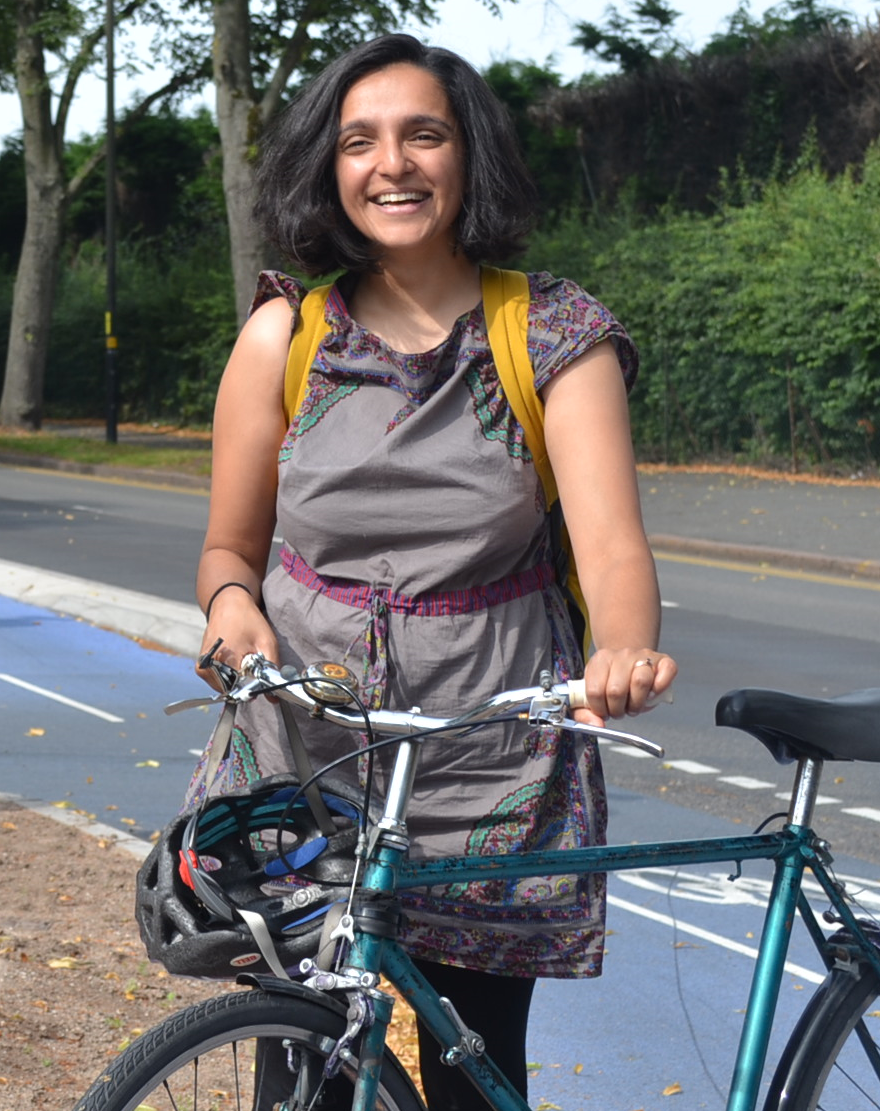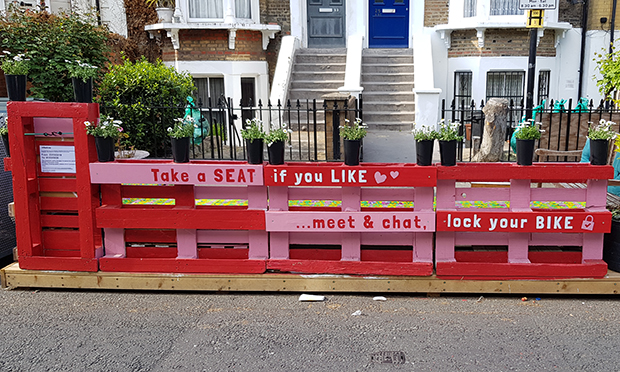In the second half of my interview with Chair of Birmingham’s cycling campaigning group Pushbikes Chris Lowe, he answers my questions on the situation facing cycle campaigning in 2020. Part 1 is here
How do you think the current global pandemic will affect walking and cycling in the UK? Is there a unique opportunity?
We have to be careful in tone here, I think. The lockdown has had many negative impacts on our lives, in addition to the human cost of Covid 19. But it is true that there can be positive changes for active transport coming out of this disaster.
The public debate around cycling is in a very different place to 10 years ago when I first got involved in cycle campaigning. Transport for London, under Andrew Gilligan as Johnson’s transport lead, along with excellent campaigning from the London Cycling Campaign, started setting a standard for infrastructure in the UK that could approach European best practice. Then the Cycle City Ambition Fund money that Birmingham won with their ‘Birmingham Cycle Revolution’ enabled serious steps forward in ambition here as well. The pressure from campaigners for more ambitious infrastructure hasn’t stopped, and cities are competing almost to see whose cycle plans are better – Greater Manchester with Andy Burnham and Chris Boardman have put in place an impressive plan with the Beelines to transform the city.
Many local councils are in the position to seize the opportunity that any funding from central government offers, because of the Local Cycling and Walking Investment Plans that they have been working on over the past year, so the announcement of £2 billion for cycling and walking is being jumped at. Birmingham had plans that could be brought forward and transport planners who have the experience and vision to be able to quickly produce an emergency transport plan that could transform the city.
This isn’t hyperbole. The DfT guidance for local councils has said that the money that councils will receive must be for “swift and meaningful plans to reallocate road space to cyclists and pedestrians, including on strategic corridors”, and emphasises that the quickest and cheapest way is through closing off roads to private motor traffic travelling through that area. It states that 20mph zones are insufficient, and that low-traffic filtered neighbourhoods should be looked at. And if work hasn’t finished on these emergency measures within 8 weeks, then the DfT might reduce future payments. This is, in effect, direct instruction from the DfT to implement immediately Dutch style town planning, with motor traffic pushed onto main roads and out of town centres, and the rest of the road network only having very local traffic. Imagine kids being able to play in the streets as they did 30 years ago, and being able to cycle across the city without rat-running motor traffic speeding by you, squeezing you into parked cars.
It could all go wrong, of course, and there could be a strong backlash. Low Traffic Neighbourhoods haven’t been really tried out in Birmingham yet, so they are still quite a new idea for most people here. But the council has been building up to this in the last few years – we have the perfect confluence of money, urgency and know-how which could mean that this is it.
The challenge for campaigners will be two-fold – to keep on top of the proposals produced and try to offer scrutiny and feedback in very short time-spans, and to influence the public discourse to put forward the positive benefits for all residents of Birmingham from the changes that are coming.
What do you think of some of the measures that have taken place in the UK in places like Lambeth and Leicester?
Leicester has been an example of real innovation and direction in the UK, despite not receiving the same level of funding as larger cities such as Manchester and Birmingham. The mayor of Leicester, Peter Soulsby, has understood the challenge for longer than most city leaders, and has been able to lead Leicester through some very impressive changes to their transport network. The cycle campaign there has found themselves in the strange position of having to support the council against vocal criticism, rather than having to be strongly critical of the council themselves (they do, of course, scrutinise transport proposals as well). In London, Waltham Forest has done amazing work with their mini-Holland. I’m not as familiar with Lambeth’s work, apart from their work on cycle parking and the use of bike hangers, such as Friends of the Earth has on Allison Street, to provide secure cycle parking for local residents. That has been a very impressive scheme, ahead of the rest of the UK.
What do you think of Birmingham’s Emergency Transport plan?
I’m delighted by the Emergency Transport Plan. It hasn’t come out of nowhere – many of the elements were in the transport plan consulted on this spring, and the ambition is very similar, if on a short time scale. It shows the real change that has taken place inside Birmingham City Council over the last couple of decades, and especially in the last couple of years with the experiences of delivering the first steps of the Birmingham Cycle Revolution.
We will see the first widespread use of Experimental Traffic Orders to implement people-friendly changes to the transport network here in Birmingham (Hurst Street outside the Hippodrome being the first notable use a couple of years ago).This means that most of the consultation on the changes will take place when temporary changes have been put in place. Of course local residents will be engaged with at the start, but the truncated timescale for delivery means that stuff has to be put in fast. But this is a good thing – by consulting local people when they are able to see the transformation offered by the changes, there will be a more positive response and residents will be able to properly evaluate the proposals. I’m very optimistic that there will be big changes.
What we won’t see is the rapid roll-out of the same quality of cycle track as we have had done the A34 and A38. That sort of infrastructure takes time to plan out properly and build. This means that junctions on main roads will continue to be a barrier slowing down people on bikes and putting off the more nervous. We will have to keep pushing the council to not sit on their laurels and make long term plans to rebuild junctions to make them comfortable for cycling across.
What has been Pushbikes greatest campaigning success?
We have spent many hours engaged with local transport planners, looking through proposals for infrastructure and putting forward detailed responses. This can be frustrating, as very often our comments on schemes are pretty much ignored and the schemes go ahead with very little adaption for cycling. But I can see in the plans that come forward now features that we were calling for several years ago – it takes time to filter through but the long slog is worth it.
Our engagement with the wider plans around the Birmingham Cycle Revolution has been important too. For example, we provided arguments for the investment in the Big Birmingham Bike scheme and gave it positive support when it was first proposed. The idea of giving away thousands of bikes was a challenge to sell, but it was the right thing to do, and we were able to support that decision in stakeholder meetings and with the wider cycling community. The scheme has now been responsible for the establishment of many new community cycling clubs across Birmingham, delivering training and social activities for people who would never have cycled otherwise.
What lesson’s have been learned from previous campaign fails?
Our engagement with Birmingham City Council has been very good, but we have found it a challenge to encourage and enable the wider community to take part in cycle campaigning. Campaigning in general, but particularly engagement with infrastructure proposals that won’t be finished for another 3 or 4 years, is a difficult sell, and that challenge has often led me to focus on the easier engagement with Birmingham City Council. I can see the progress that is being made, because I have been involved so long, but for people who are new to cycle campaigning, the pace of change is tortuously slow and understandably most people who want to campaign see clearly the urgency of the changes that we need. Disillusionment is common and to be honest, I understand it very well. I’d like to say that I know the answer to this challenge, but I don’t.
Being able to build up a wider campaigning community would enable us to put political pressure on where necessary. Many of the barriers to implementing good cycle infrastructure do have political aspects, and there isn’t really any substitute for getting lots of people to write to councillors and show public pressure. I think that is something that is missing from our campaigning at the moment.
Do you think that there is now the will for a cycling revolution to finally happen in Birmingham?
It has been happening for the past couple of years, but I understand why you phrase this as ‘finally’. We don’t have the time to wait for 20 or 30 years while Birmingham’s transport network is gradually brought into the modern era with high quality infrastructure. We have 9.5 (and counting) years to radically change the energy use of transport in Birmingham to play our part in tackling the climate emergency.
By late autumn 2020 we will know if Birmingham is able to radically step up progress towards that 2030 goal, I think. It seems that central government will provide the money and the political cover needed, and perhaps also the changes in the law and regulations. Let’s hope that Birmingham City Council and the West Midlands Combined Authority can follow through on their ambitions.
I am a member of Pushbikes and have campaign with them on behalf of Birmingham Friends of the Earth. If you are interested in getting involved with Pushbikes their website is www.pushbikes.org








